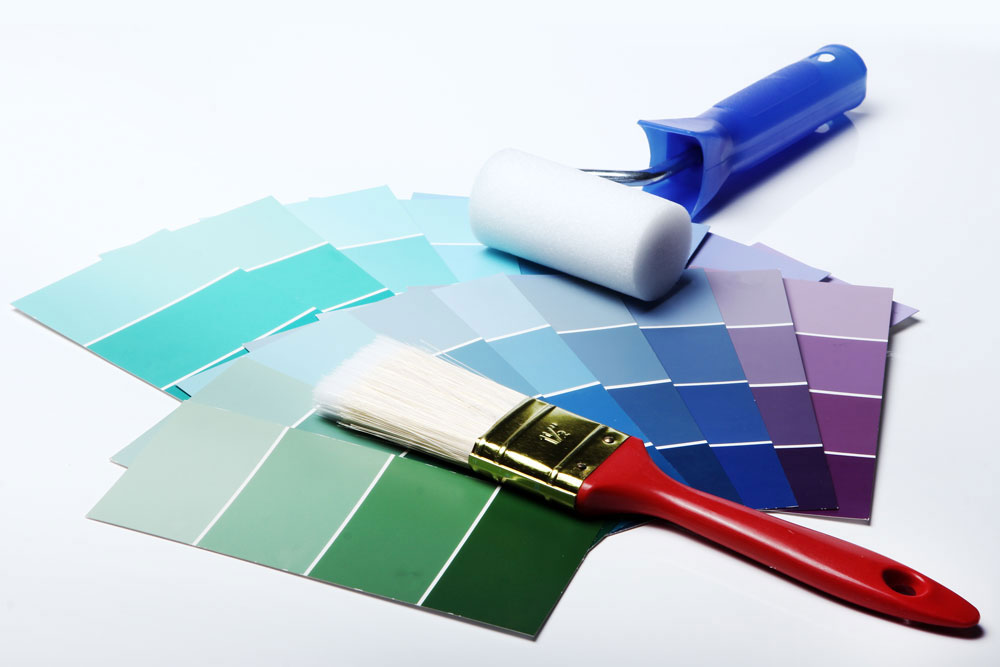Ordinary oil-based paints are the oldest form of modern paints in which the resin used is made from a type of vegetable oil, which is obtained from flaxseed or soybeans. Oil paints are often referred to as “solvent-based” or “alkyd” paints. Alkyd paints are the descendants of modern oil paints, which consist of an alkyd resin dissolved in a diluent instead of a pigment suspended in the oil. In fact, alkyd paints are based on alkyd resins (plant-derived oils). But in general, it can be said that most commercially available oil paints are made with a pigment suspended in a solution of an alkyd resin and an oil-based solvent. Most alkyd paints use diluents that contain a chemical solvent such as alcohol. The purpose of adding these diluents is to improve the texture of the paint and make it easier to use. These dyes contain very high levels of volatile organic compounds (VOCs) which make the colour odour very noticeable. Therefore, during the process of implementing these paints, the use of proper ventilation is necessary to protect painters from the odour emitted by the paint.
Oil-based Paints Definition
Today, alkyds are known as the most important and widely used resins in surface coatings. These resins have been considered from different aspects, among which we can mention the versatility in formulas and programs, low price and durability. Therefore, alkyd resins can be well used in various fields in solvent-based formulations. The glossy surface and resistance created by oil-based Paints on the surface have caused this paint to be used in various surfaces, including cabinets, furniture, doors, floors, floors, commercial wall coverings, moulding and other interior and exterior surfaces Taken and become a popular choice.
Maybe You’re interested in The Difference Between Epoxy and Polyurethane Coatings
Experience has shown that professional painters usually choose oil paints for their projects because these paints adhere well to most surfaces and are very suitable for covering small uneven surfaces. Also, when using these paints, the effect of brush or roller movement does not remain on the desired surface. But two important points in using these paints are that you should mix oil paints regularly because the oil in these types of paints separates quickly. You should also use a brush or roller that is specifically designed for these colours. Because cleaning coloured brushes requires chemicals such as thinners.
Maybe You’re interested in Know Everything About Plastic Paint
Advantages and disadvantages of Oil-based Paints
Oil-based Paints have better surface penetration and adhesion than other paints. The glossy surface of oil paints makes them stain-resistant surfaces and easier to clean the paint, which makes them a good choice for stained surfaces, wood knots and rusty metals. These types of paints have a long shelf life and can cover the walls of the house for a long time without seeing any signs of wear or damage. In fact, oil paints are very durable and resistant to moisture and are hard enough to withstand daily wear and tear. Oil paints are widely used for busy areas of the house, such as hallways and playrooms for children. It is worth mentioning that oil paints produced in Iran due to lack of environmental technologies and non-use Petroleum solvents are not very good for children’s health, this only shows the durability of these paints against wear and tear. They are also good options for bathrooms, kitchens, toilets as well as cabinets and furniture. In fact, it can be said that preferring waterproof paints in these areas that are constantly exposed to water and moisture, ensures the consumer that the paint does not spoil for a long time and the colour remains the same as it was on the first day. Stay.

On the other hand, oil paint surfaces do not stain easily and resist fading over time. In fact, the lustre of this colour maintains its uniformity for a long time. In addition, since these paints have a high coverage capability, the desired surface can be painted without complete preparation or cleaning of the paint. But it should be noted that one of the disadvantages of these paints is the length of time it takes for them to dry. The drying time of these paints is much longer than acrylic paints. Surface drying of this paint takes 6 to 8 hours, but deep drying that provides the basis for the application of subsequent layers usually takes 24 hours. Although this feature may be one of the disadvantages of this paint, it should be noted that this slow process causes the brush or roller marks to be significantly reduced and provide a good surface.
Maybe You’re interested in How to Remove Paint from Concrete

